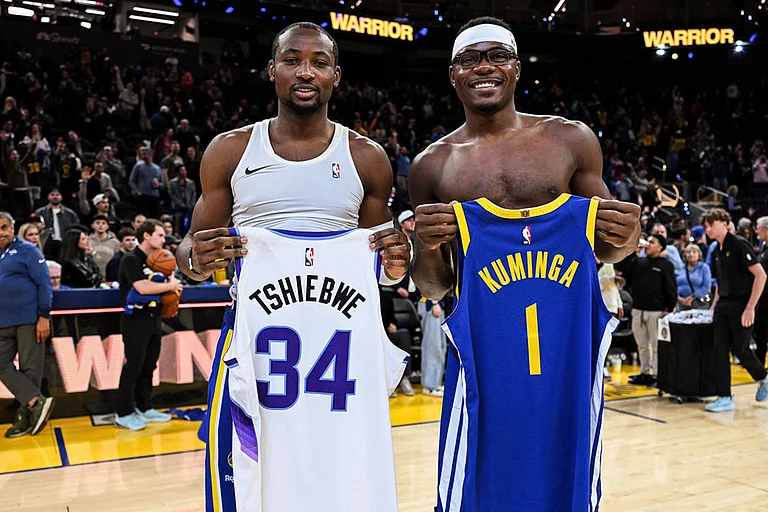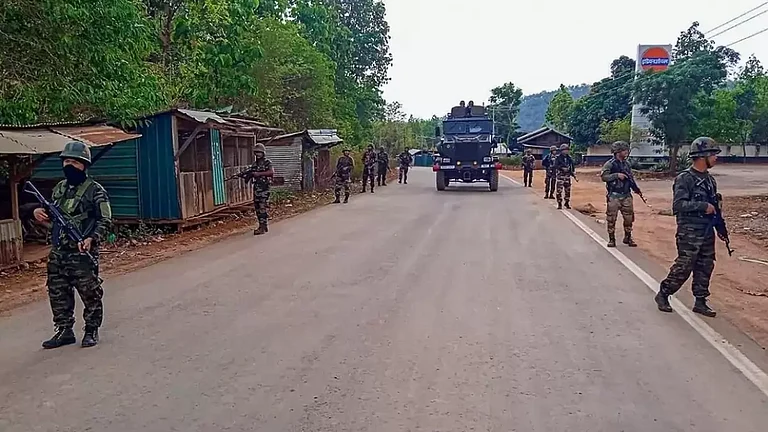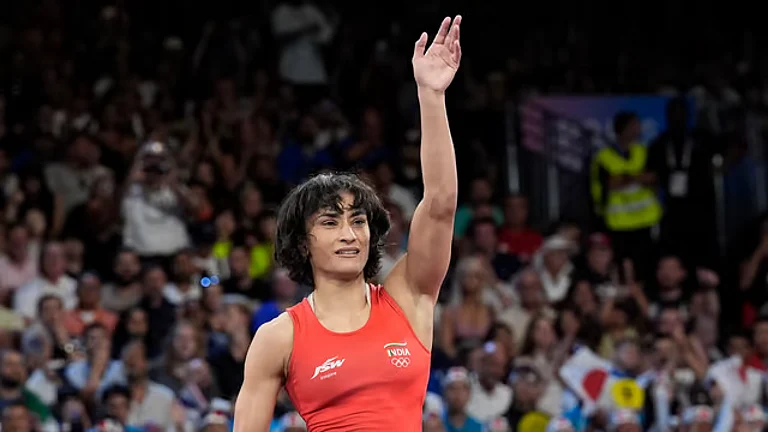Geographically isolated and culturally distanced, the eight states of Northeast India are still far from the popular imagination of India. Connected with only a 27-km-long chicken’s neck corridor with rest of the country, Northeast India, however, makes the tables turn when it comes to sports.
The landmass that comprises about 8 per cent of India and 3.8 per cent of population is famous for producing some of the finest sportspersons who keep India’s tally in prestigious tournaments like Olympics and Commonwealth Games high.
For years Northeast India has been producing some of the most acclaimed international players. To name a few, Bhaichung Bhutia from Sikkim is the first Indian footballer to sign a contract with a European club when he joined the English club Bury in 1999. Bhutia, now 46, is credited with taking Indian football to the international arena. He is instrumental in India winning Nehru Cup, LG Cup, and SAFF Championship among others.
MC Mary Kom from Manipur is the only female boxer to have qualified for the 2012 Summer Olympics and only female boxer to win the World Amateur Boxing Championship six times. She is also the first female to bring a gold medal in the Asian Games.
Apart from them, K Sanjita Chanu from Manipur, sprinter Hima Das from Assam, Lovlina Borgohain from Assam, Jeremy Lalrinnunga from Mizoram, Saikhom Mirabai Chanu, Bidyarani Devi Sorokhaibam, and Nayanmani Saikia are some of the names that have brought laurels to India and in the ongoing Commonwealth Games 2022.
With difficult terrains, rich bio-diversity and ethnic diversity, Northeast India comes in the news for insurgency, ethnic conflict, and international border disputes. However, Northeast India’s remarkable performance in sports makes one wonder about ingredients that the region has to offer to make a fine sportsperson from scratch.
For some, it’s all in the genes. The states of Northeast India have been playing different sports traditionally. For some, the cold weather and the terrain make it perfect for sports. However, there is no known research to support it. One among the many reasons for sports being so popular in Northeast India is that it gives a livelihood opportunity, according to Lalnghinglova Hmar, the Honorary Secretary of Mizoram Football Association and an Executive member of the All India Football Federation.
Unlike rest of India, football is more popular than cricket in the Northeast. Hmar, popularly known as the Father of Mizo Football, said the love for football in states like Mizoram and Manipur is also because of its affiliation to Christianity.
Hmar said, “The states follow the culture of the Western countries which follow Christianity, so there is a natural interest for football. The well-structured football associations in the zone and district level have been instrumental in bringing out fresh sports talents.”
Home to around 200 ethnic communities, in Northeast India, sports are also used as tools of community building in a region which often grabs headlines for ethnic conflicts.
For example, the state of Nagaland, which became a state of the Indian Union 1963, is home to 16 tribes. The state, where a strong separatist movement is going on since India’s Independence, is also the state that gave India its first captain for the Indian national football team in the form of Talimeren Ao. Ao captained India against France in 1948 London Olympics, which also happened to be Indian football team’s first international match after Independence.
Northeastern states like Manipur and Mizoram, apart from insurgency, have been dealing with abuse of drugs. The states are the passage of illegal drugs produced in the famous ‘Golden Triangle’. Apart from taking up strong vigilante measures, sports have been used as tools in these states to divert youngsters from drug abuse.
Talking to Outlook, Gitika Talukdar, an internationally acclaimed sports photojournalist from Assam, says, “Physical education and sports are helpful in curbing the menace of drug addiction, HIV, alcoholism, terrorism, etc, amongst the youth. Sportspersons have given back to their communities by supporting and guiding young athletes from their native lands.
“Mary Kom Regional Boxing Foundation is a great example of this. The foundation provides free coaching to students with free lodging and food and covers additional expenses involved during competitions. This kind of support attracted youths to become a good player rather than getting involved in narcotics and drugs.”
Situated at the southernmost tip of Northeast India, Mizoram has produced some of the finest footballers like Lallianzuala Chhangte, Jeje Lalpekhlua, and Jerry Mawihmingthanga. In 2020, Mizoram became the first state of India to have accorded ‘Industry standard’ to sports.
On that occasion, Mizoram Sports Minister Robert Romawia Royte said, “Sports should not be considered just as an entertainment and enjoyment. With the involvement of many men and women in different sports, we can curb various societal negativity specially misuse of drugs,”
For the past few years, especially after MC Mary Com’s bronze Medal in 2012 Olympics, the sports infrastructure in Northeast India is gradually improving.
Under the Khelo India Scheme, Rs. 423.01 crore were sanctioned in 2021 to develop 62 sports infrastructure projects in the Northeast. The National Sports University has been established in Imphal in Manipur which provides courses on sports science, sports technology, sports management and sports coaching
Talukdar said, “As of 5th March 2022, approximately 19,684 talented sportspersons are being trained under Sports Authority of India (SAI) schemes throughout the country, and 22.3 per cent of girl trainees at SAI centres are trained in the Northeastern states of Arunachal Pradesh, Manipur, Meghalaya, Mizoram, Nagaland, Sikkim and Tripura. They are provided with regular sports training in 27 sports disciplines on residential and non-residential basis in 290 SAI sports centres.”
Surrounded by five international borders, Northeast India’s homogeneity with neighbouring countries rather than the rest of India often makes it a victim of racial discrimination. Yet sports are events that play a significant role in bringing it closer to mainland. Traditional matrilineal societies of Northeast communities also give space for the girl child to go out and pursue sports. Boxer MC Marykom is the perfect example of this.


























